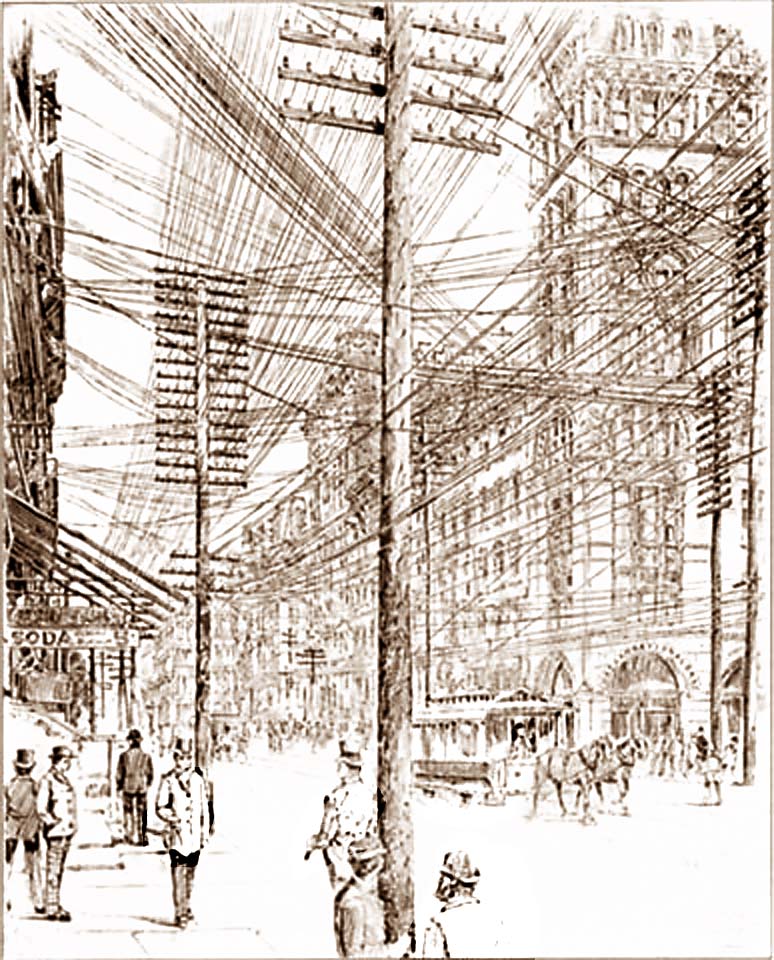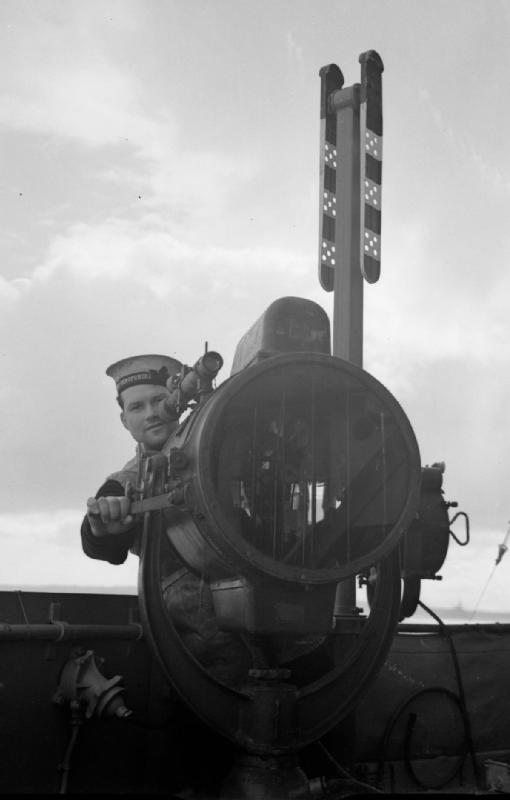|
Semaphore Flag Signaling System
In computer networking, Semaphore Flag Signaling System (SFSS) is a humorous proposal to carry Internet Protocol (IP) traffic by semaphores. Semaphore Flag Signaling System was initially described in RFC 4824, an April Fools' Day RFC issued by the Internet Engineering Task Force edited by J. Hofmueller, et al. and released on April Fools' Day 2007. It is one of several April 1 RFCs. Reference implementation A reference implementation of IP over SFS has been done by the authors of the RFC within the project "Talking the Fish". An email was transmitted using SMTP over Semaphore Flag Signals. See also *IP over Avian Carriers, a similar humorous proposal *Semaphore, for other kinds of semaphores *Victorian Internet, for the serious relation between semaphore and the internet *Free-space optical communication, a more effective method of high-speed communication using visible light in free space * Optical telegraph References {{DEFAULTSORT:Semaphore Flag Signaling System Semaphore ... [...More Info...] [...Related Items...] OR: [Wikipedia] [Google] [Baidu] |
Computer Networking
A computer network is a set of computers sharing resources located on or provided by network nodes. The computers use common communication protocols over digital interconnections to communicate with each other. These interconnections are made up of telecommunication network technologies, based on physically wired, optical, and wireless radio-frequency methods that may be arranged in a variety of network topologies. The nodes of a computer network can include personal computers, servers, networking hardware, or other specialised or general-purpose hosts. They are identified by network addresses, and may have hostnames. Hostnames serve as memorable labels for the nodes, rarely changed after initial assignment. Network addresses serve for locating and identifying the nodes by communication protocols such as the Internet Protocol. Computer networks may be classified by many criteria, including the transmission medium used to carry signals, bandwidth, communications protocols ... [...More Info...] [...Related Items...] OR: [Wikipedia] [Google] [Baidu] |
Victorian Internet
''The Victorian Internet: The Remarkable Story of the Telegraph and the Nineteenth Century's On-Line Pioneers'' is a 1998 book by Tom Standage. The book was first published in September 1998 through Walker & Company and discusses the development and uses of the electric telegraph during the second half of the 19th century and some of the similarities the telegraph shared with the Internet of the late 20th century. The central idea of the book posits that of these two technologies, it was the telegraph that was the more significant, since the ability to communicate globally at all in real-time was a qualitative shift, while the change brought on by the modern Internet was merely a quantitative shift according to Standage, though, by the same token, global communication was just a quantitative shift from long-distance communication. Contents The book describes to general readers how some of the uses of telegraph in commercial, military, and social communication were, in a sense, a ... [...More Info...] [...Related Items...] OR: [Wikipedia] [Google] [Baidu] |
Physical Layer Protocols
Physical may refer to: *Physical examination In a physical examination, medical examination, or clinical examination, a medical practitioner examines a patient for any possible medical signs or symptoms of a medical condition. It generally consists of a series of questions about the pati ..., a regular overall check-up with a doctor * ''Physical'' (Olivia Newton-John album), 1981 ** "Physical" (Olivia Newton-John song) * ''Physical'' (Gabe Gurnsey album) * "Physical" (Alcazar song) (2004) * "Physical" (Enrique Iglesias song) (2014) * "Physical" (Dua Lipa song) (2020) *"Physical (You're So)", a 1980 song by Adam & the Ants, the B side to " Dog Eat Dog" * ''Physical'' (TV series), an American television series See also {{disambiguation ... [...More Info...] [...Related Items...] OR: [Wikipedia] [Google] [Baidu] |
Internet Architecture
World Wide Web topology is the network topology of the World Wide Web, as seen as a network of web pages connected by hyperlinks. The Jellyfish and Bow Tie models are two attempts at modeling the topology of hyperlinks between web pages. Models of web page topology Jellyfish Model The simplistic Jellyfish model of the World Wide Web centers around a large strongly connected core of high-degree web pages that form a clique; pages such that there is a path from any page within the core to any other page. In other words, starting from any node within the core, it is possible to visit any other node in the core just by clicking hyperlinks. From there, a distinction is made between pages of single degree and those of higher order degree. Pages with many links form rings around the center, with all such pages that are a single link away from the core making up the first ring, all such pages that are two links away from the core making up the second ring, and so on. Then from each ri ... [...More Info...] [...Related Items...] OR: [Wikipedia] [Google] [Baidu] |
April Fools' Day Jokes
By tradition, in some countries, April 1 or April Fools' Day is marked by practical jokes. Notable practical jokes have appeared on radio and TV stations, newspapers, web sites, and have even been done in large crowds. History * In February 1708, satirist Jonathan Swift issued an almanac titled ''Predictions for the Year 1708'' by a pseudonym "Isaac Bickerstaff", in which he predicted the death of astrologer John Partridge on March 29 of that year. * In January 1749, London newspapers published that a showman would squeeze his entire body into a wine bottle at the Theatre Royal Haymarket. However, the story was a bet between Duke of Portland and the Earl of Chesterfield, in which the former wanted to fool the public who filled the house but no performer ever showed up, which eventually led to riots. * In 1956, a rhinoceros called "Cacareco" (Portuguese for "rubbish") won a city council seat in São Paulo, Brazil with 100,000 votes, due to a campaign led by students who were tired ... [...More Info...] [...Related Items...] OR: [Wikipedia] [Google] [Baidu] |
Optical Telegraph
An optical telegraph is a line of stations, typically towers, for the purpose of conveying textual information by means of visual signals. There are two main types of such systems; the semaphore telegraph which uses pivoted indicator arms and conveys information according to the direction the indicators point, and the shutter telegraph which uses panels that can be rotated to block or pass the light from the sky behind to convey information. The most widely used system was invented in 1792 in France by Claude Chappe, and was popular in the late eighteenth to early nineteenth centuries. This system is often referred to as ''semaphore'' without qualification. Lines of relay towers with a semaphore rig at the top were built within line of sight of each other, at separations of . Operators at each tower would watch the neighboring tower through a telescope, and when the semaphore arms began to move spelling out a message, they would pass the message on to the next tower. This sy ... [...More Info...] [...Related Items...] OR: [Wikipedia] [Google] [Baidu] |
Free-space Optical Communication
Free-space optical communication (FSO) is an optical communication technology that uses light propagating in free space to wirelessly transmit data for telecommunications or computer networking. "Free space" means air, outer space, vacuum, or something similar. This contrasts with using solids such as optical fiber cable. The technology is useful where the physical connections are impractical due to high costs or other considerations. History Optical communications, in various forms, have been used for thousands of years. The ancient Greeks used a coded alphabetic system of signalling with torches developed by Cleoxenus, Democleitus and Polybius. In the modern era, semaphores and wireless solar telegraphs called heliographs were developed, using coded signals to communicate with their recipients. In 1880, Alexander Graham Bell and his assistant Charles Sumner Tainter created the photophone, at Bell's newly established Volta Laboratory in Washington, DC. Bell considered it ... [...More Info...] [...Related Items...] OR: [Wikipedia] [Google] [Baidu] |
Semaphore
Semaphore (; ) is the use of an apparatus to create a visual signal transmitted over distance. A semaphore can be performed with devices including: fire, lights, flags, sunlight, and moving arms. Semaphores can be used for telegraphy when arranged in visually connected networks, or for traffic signalling such as in railway systems, or traffic lights in cities. Fire The Phryctoriae were a semaphore system used in Ancient Greece for the transmission of specific prearranged messages. Towers were built on selected mountaintops, so that one tower, the ''phryctoria'', would be visible to the next tower, usually twenty-miles distant. Flames were lit on one tower, then the next tower would light a flame in succession. The Byzantine beacon system was a semaphore developed in the 9th century during the Arab–Byzantine wars. The Byzantine Empire used a system of beacons to transmit messages from the border with the Abbasid Caliphate across Asia Minor to the Byzantine capital, Const ... [...More Info...] [...Related Items...] OR: [Wikipedia] [Google] [Baidu] |
Internet Protocol
The Internet Protocol (IP) is the network layer communications protocol in the Internet protocol suite for relaying datagrams across network boundaries. Its routing function enables internetworking, and essentially establishes the Internet. IP has the task of delivering packets from the source host to the destination host solely based on the IP addresses in the packet headers. For this purpose, IP defines packet structures that encapsulate the data to be delivered. It also defines addressing methods that are used to label the datagram with source and destination information. IP was the connectionless datagram service in the original Transmission Control Program introduced by Vint Cerf and Bob Kahn in 1974, which was complemented by a connection-oriented service that became the basis for the Transmission Control Protocol (TCP). The Internet protocol suite is therefore often referred to as ''TCP/IP''. The first major version of IP, Internet Protocol Version 4 (IPv4), is the do ... [...More Info...] [...Related Items...] OR: [Wikipedia] [Google] [Baidu] |
IP Over Avian Carriers
In computer networking, IP over Avian Carriers (IPoAC) is a joke proposal to carry Internet Protocol (IP) traffic by birds such as homing pigeons. IP over Avian Carriers was initially described in issued by the Internet Engineering Task Force (IETF), written by D. Waitzman, and released on April 1, 1990. It is one of several April Fools' Day Request for Comments. Waitzman described an improvement of his protocol in , ''IP over Avian Carriers with Quality of Service'' (1 April 1999). Later, in —released on 1 April 2011, and 13 years after the introduction of IPv6— Brian Carpenter and Robert Hinden published ''Adaptation of RFC 1149 for IPv6''. IPoAC has been successfully implemented, but for only nine packets of data, with a packet loss ratio of 55% (due to operator error), and a response time ranging from to over . Thus, this technology suffers from high latency. Real-life implementation On 28 April 2001, IPoAC was implemented by the Bergen Linux user group, unde ... [...More Info...] [...Related Items...] OR: [Wikipedia] [Google] [Baidu] |
Reference Implementation
In the software development process, a reference implementation (or, less frequently, sample implementation or model implementation) is a program that implements all requirements from a corresponding specification. The reference implementation often accompanies a technical standard, and demonstrates what should be considered the "correct" behavior of any other implementation of it. Characteristics and examples Reference implementations of algorithms, for instance cryptographic algorithms, are often the result or the input of standardization processes. In this function they are often dedicated to the public domain with their source code as public domain software. Examples are the first CERN's httpd, Serpent cipher, base64 variants, and SHA-3. The Openwall Project maintains a list of several algorithms with their reference source code in the public domain. A reference implementation may or may not be production quality. For example, the Fraunhofer reference implementation of the ... [...More Info...] [...Related Items...] OR: [Wikipedia] [Google] [Baidu] |





